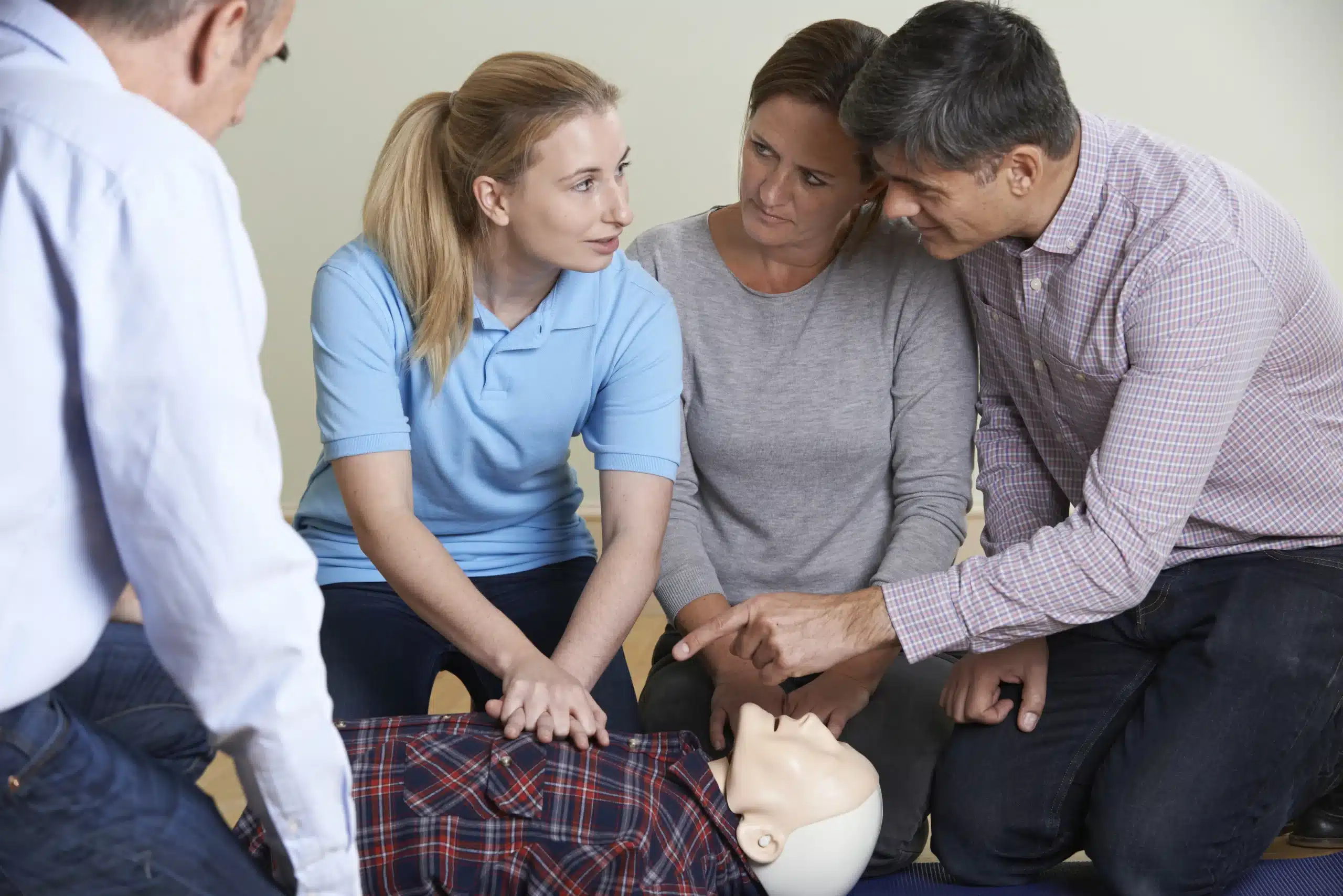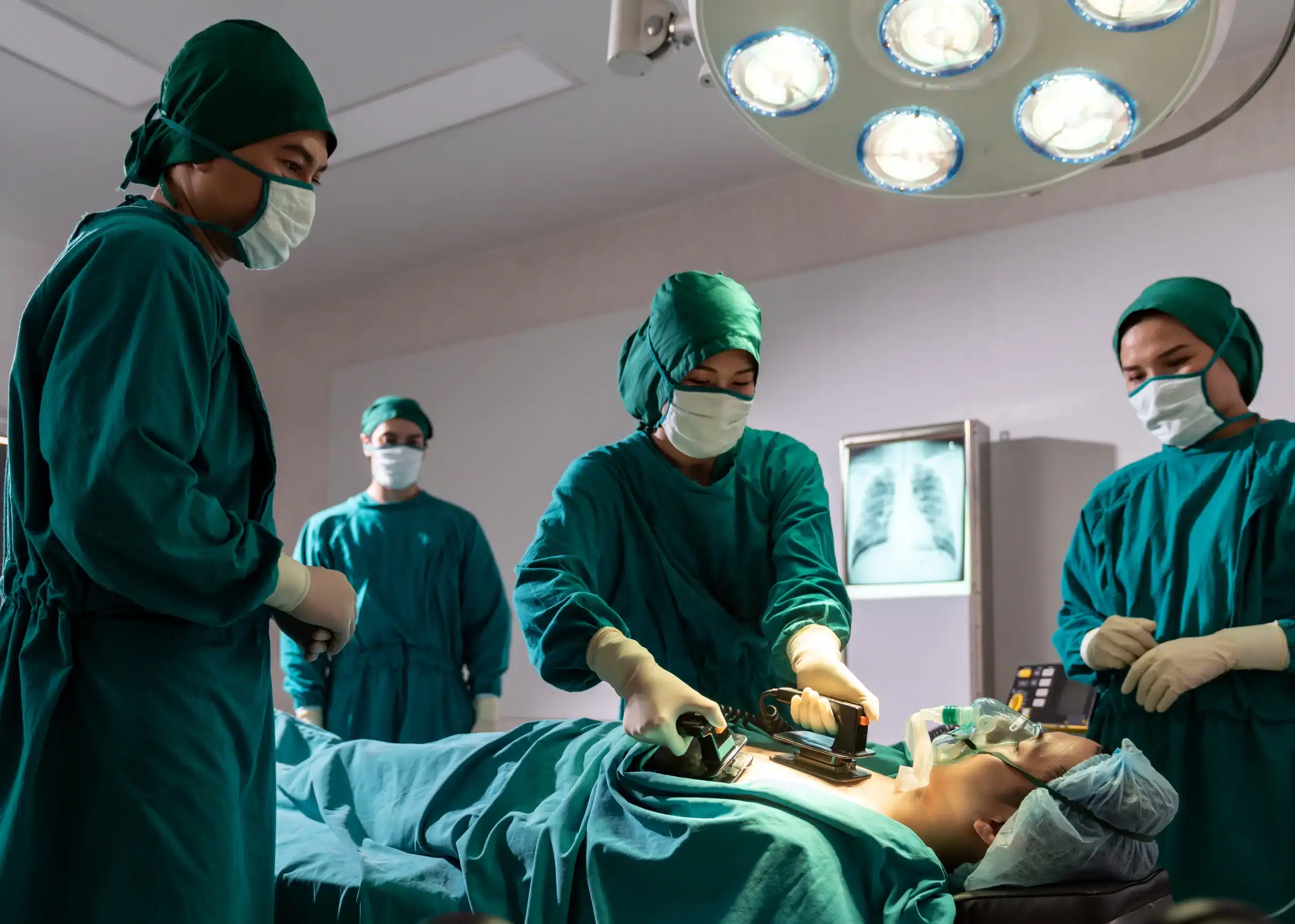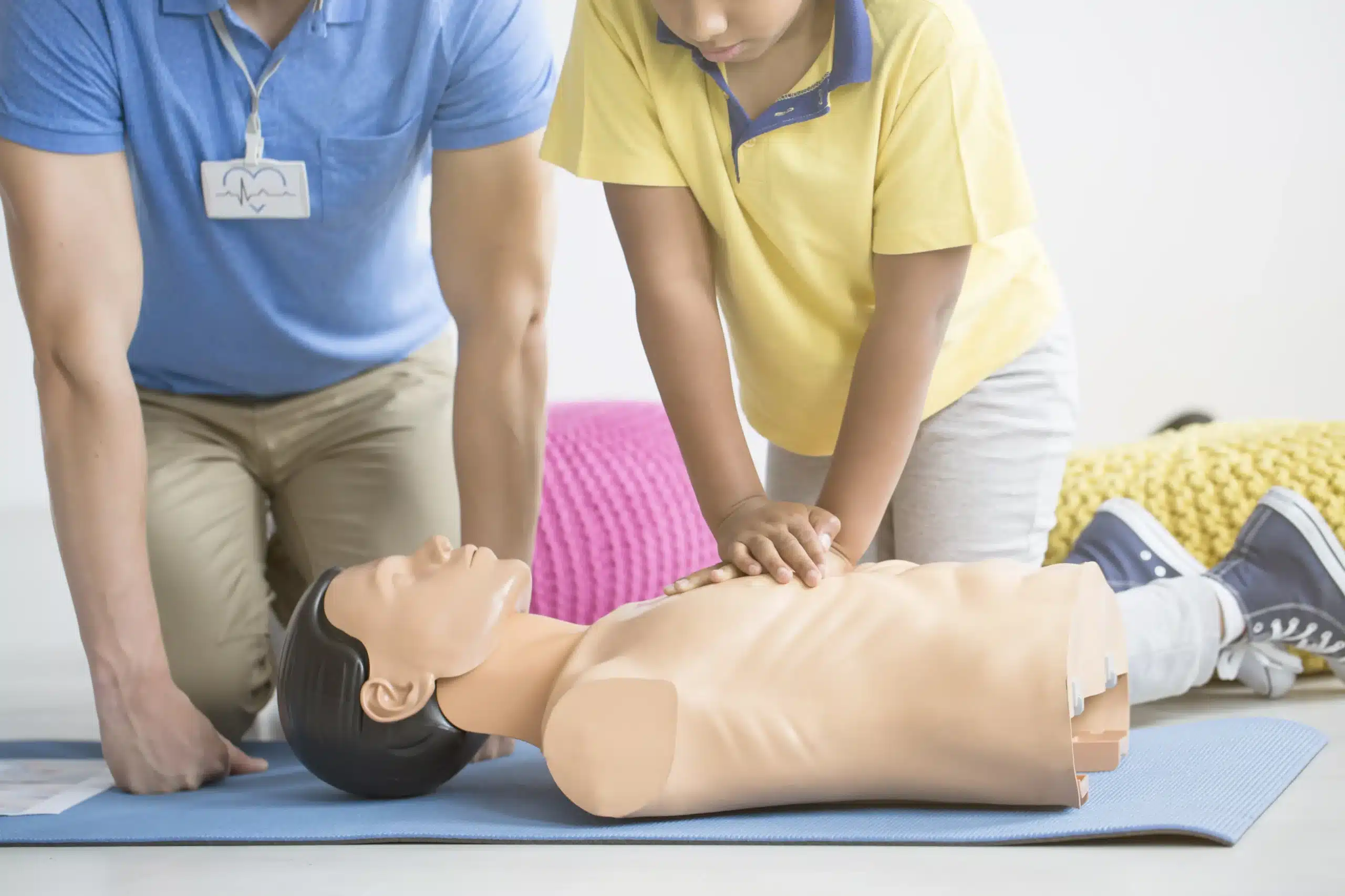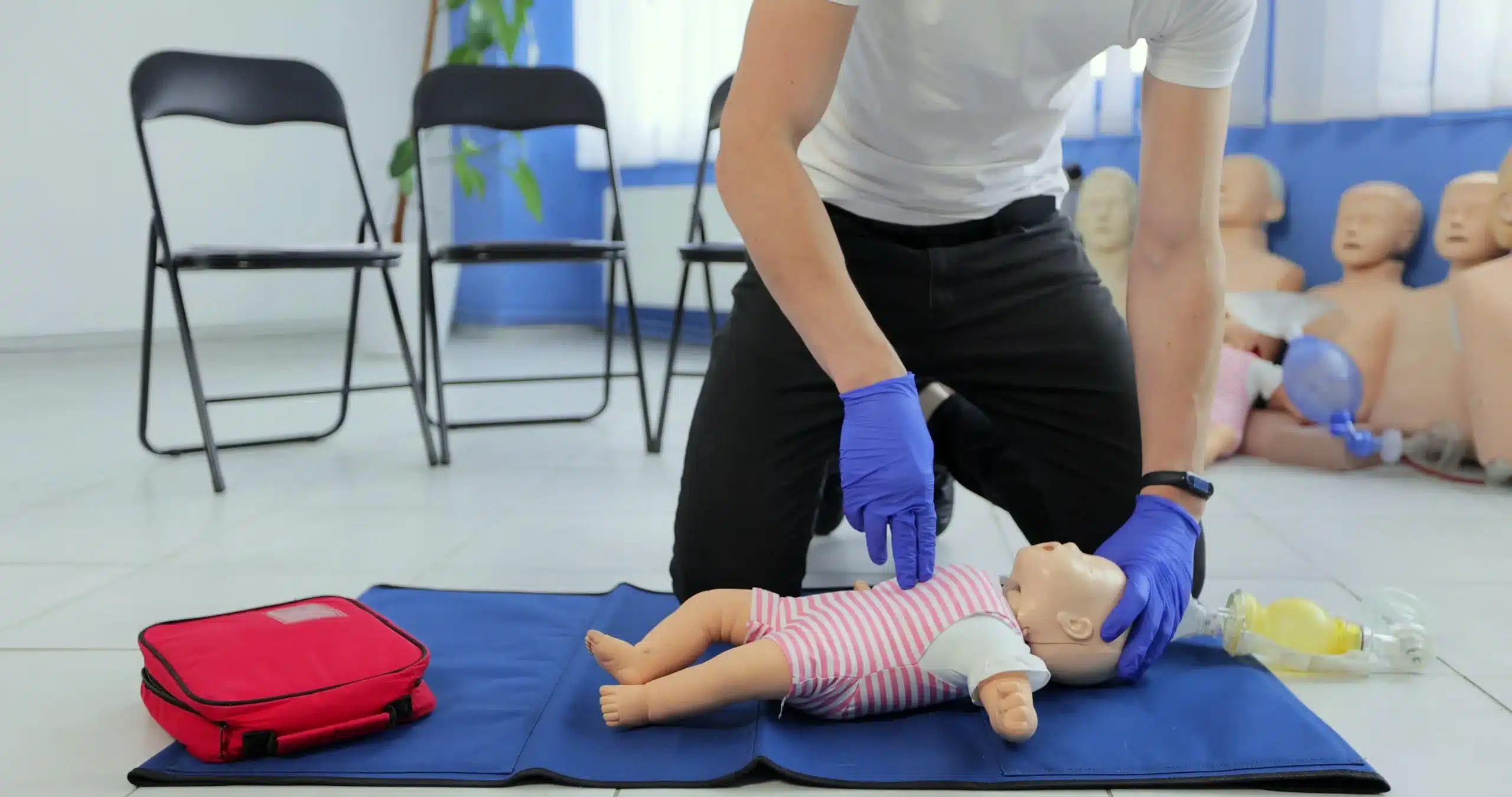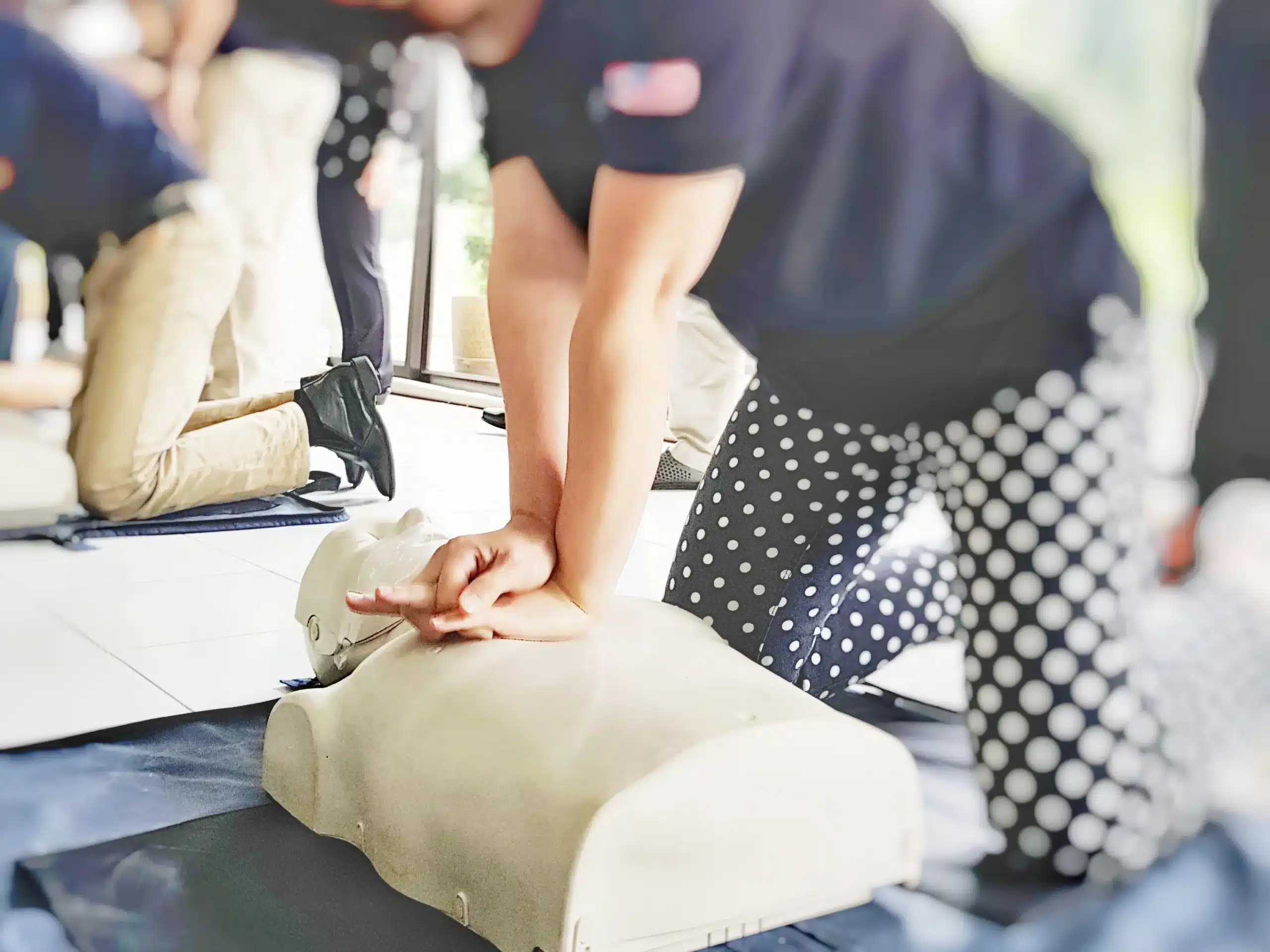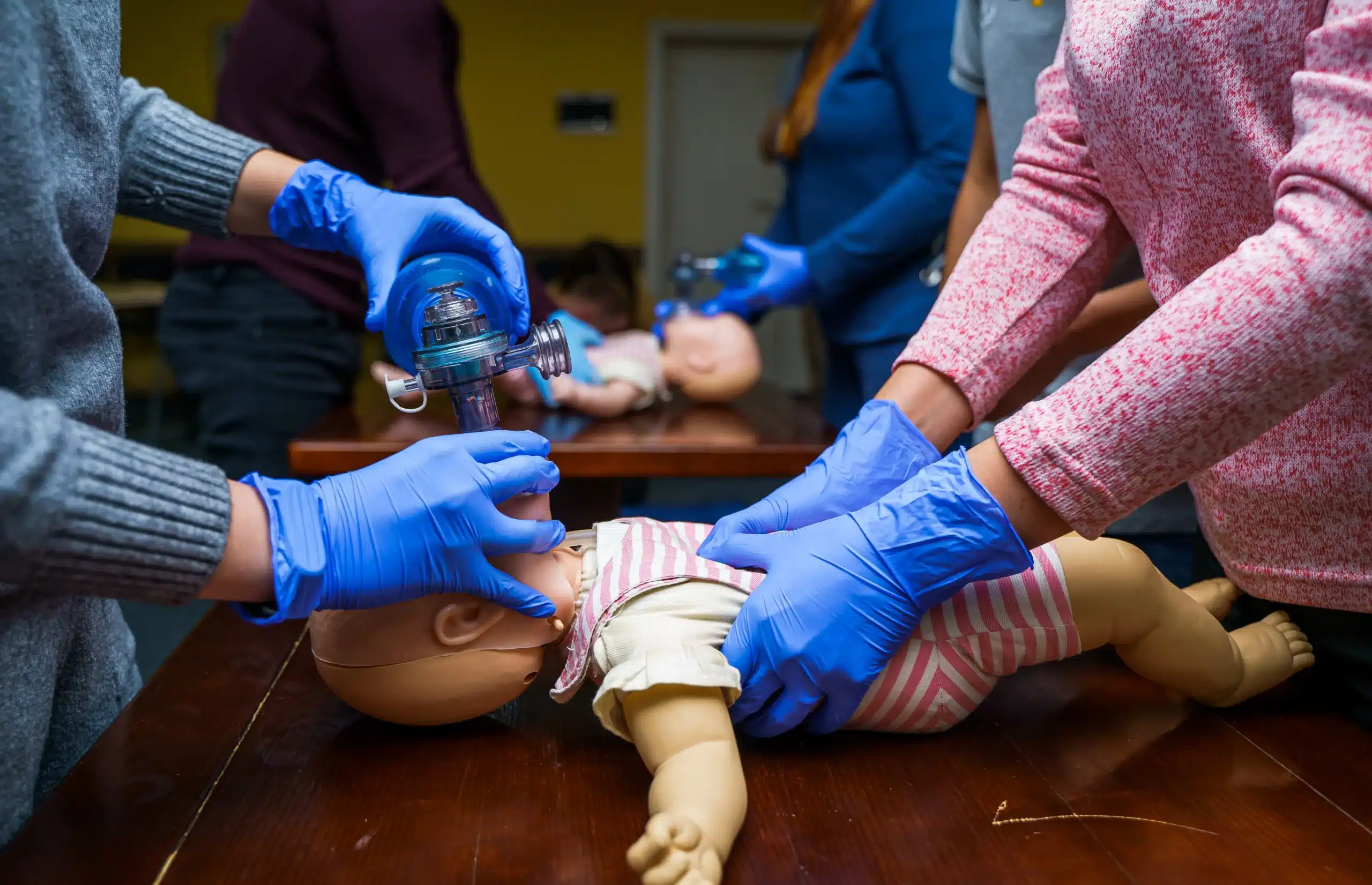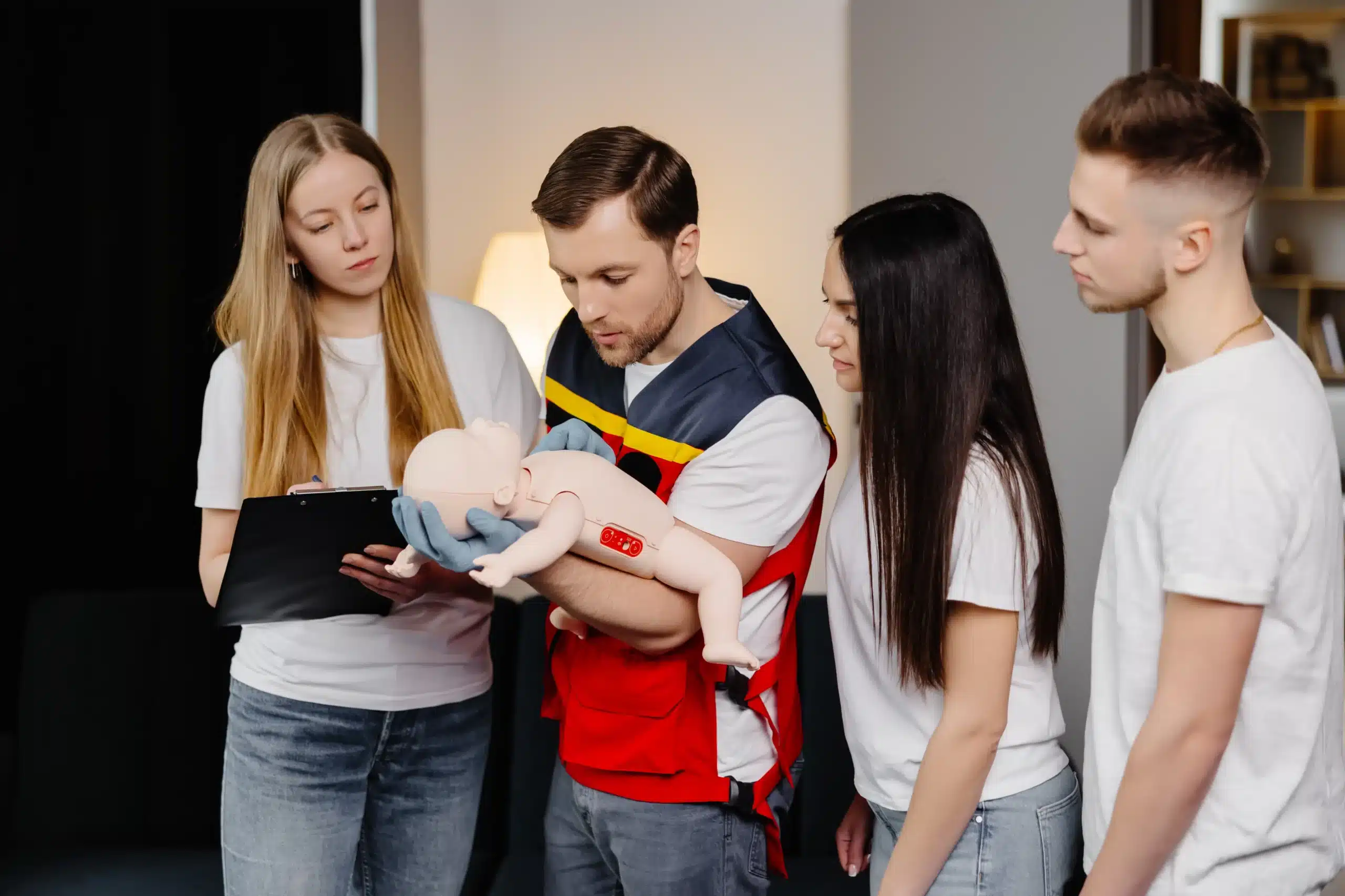In times of crisis, seconds can matter. Knowing how to respond effectively in a medical emergency can be the difference between life and death. BLS certification provides the training and confidence to act decisively when faced with a life-threatening situation. This article serves as your complete guide to BLS certification, covering everything from the basics of what BLS is to finding the right training program near you. We’ll explore the benefits of BLS certification, the skills you’ll acquire, and the steps to becoming certified. If your search for “BLS certification near me” has led you here, you’re about to discover a wealth of information to empower you to save lives.
Key Takeaways
- BLS certification empowers you to respond to medical emergencies. Whether you’re a healthcare professional or not, BLS training provides valuable life-saving skills applicable in various situations. Consider your individual needs and career aspirations when deciding if BLS is right for you.
- Finding the right BLS course requires research and consideration of different learning formats. Explore online, in-person, and blended learning options to find a course that fits your schedule and learning preferences. Look for reputable providers like Hayward CPR Classes, the American Red Cross, and the American Heart Association.
- Preparing for your BLS certification involves understanding the course content and practicing essential skills. Utilize available study materials, including practice tests and videos, to solidify your knowledge and ensure you’re prepared for the certification process.
What is BLS Certification & Who Needs It?
Knowing what BLS certification is and who needs it can save lives. This section clarifies common misconceptions and explains why this training is so important. Hayward CPR Classes offers a variety of courses to get you certified. Contact us today to learn more.
What is BLS?
Basic Life Support (BLS) certification equips you with the skills to respond to life-threatening emergencies like cardiac arrest and respiratory failure. It’s a critical credential for healthcare professionals, but it’s a valuable asset for anyone who wants to be prepared. BLS focuses on providing immediate care until more advanced medical help arrives. Think of it as the foundation for responding effectively to sudden medical crises. For more information on common myths surrounding BLS certification, check out this helpful article. We offer BLS certification courses in Hayward, CA.
Who Should Get BLS Certified?
While it’s a must-have for healthcare providers and first responders, BLS certification is beneficial for a much wider range of people. Teachers, coaches, childcare providers—anyone who might encounter a medical emergency—can benefit from BLS training. This training empowers individuals to confidently respond to crises at work, home, or in the community. If you’re still unsure if it’s right for you, this article addresses common misconceptions about who needs BLS. Hayward CPR Classes offers group discounts for BLS certification.
What Do You Learn in a BLS Course?
A BLS course covers essential lifesaving skills. You’ll learn CPR techniques, including chest compressions and rescue breaths, along with how to use a bag-valve mask and an AED. The training also emphasizes scene safety, effective teamwork during emergencies, and the legal aspects of providing aid. BLS certification provides a comprehensive approach to emergency response, from initial assessment to ongoing care. For a deeper look at the benefits of BLS certification, especially for nurses, take a look at this resource. The Red Cross also offers a clear overview of what BLS certification entails. Consider our RQI classes for maintaining your BLS skills.
Find BLS Certification Courses Near You
Finding the right BLS certification course requires a little research. This section breaks down how to find training, compares online and in-person options, discusses choosing a provider, and lists some well-known BLS certification providers.
Where to Find Training
You can find BLS training through various organizations, including hospitals, community centers, and private companies. Some employers also offer on-site training. BLS training isn’t just for healthcare professionals—anyone can learn these lifesaving skills. If you’re looking for a convenient option, an online search for “BLS classes near me” can uncover local providers and schedules.
Online vs. In-Person Classes
Deciding between online and in-person BLS classes depends on your learning style and schedule. Online courses offer flexibility, allowing you to learn at your own pace. However, in-person classes provide hands-on practice and direct interaction with an instructor. The American Red Cross offers blended learning, combining online coursework with in-person skills sessions. This hybrid approach can be a good option for those who want both convenience and practical experience. Earning your BLS certification does require a time commitment, so consider what works best for your lifestyle. American Health Training discusses common misconceptions about BLS Certification.
Choosing the Right Provider
When selecting a BLS certification provider, consider factors like cost, schedule, and the type of certification offered. Ensure the provider is reputable and accredited by a recognized organization like the American Heart Association (AHA). Smart Sim Registration emphasizes the importance of understanding BLS for healthcare providers. While cost is a factor, don’t let it be the only consideration. The value of the training and the long-term benefits outweigh the initial expense. Check if the provider offers group discounts, which can be helpful if you’re signing up with friends, family, or colleagues.
BLS Certification Providers
Several organizations offer BLS certification. Here are a few options:
Hayward CPR Classes
Hayward CPR Classes offers various AHA certification courses, including BLS, ACLS, and PALS. They provide daily classes in over 60 cities and guarantee the lowest prices in Alameda County. Serving Hayward, Union City, and San Leandro, they are a woman-owned business and offer discounts for group classes. You can contact them for more information.
American Red Cross
The American Red Cross is a well-known provider of BLS certification. They offer various courses, including online, in-person, and blended learning options.
American Heart Association
The American Heart Association is another reputable organization offering BLS certification courses. They set the standards for CPR and emergency cardiovascular care. Medtigo clarifies some common misconceptions about BLS certification.
National CPR Foundation
The National CPR Foundation provides BLS certification and other CPR and first aid courses.
ProTrainings
ProTrainings offers a range of healthcare training courses, including BLS certification.
BLS Certification: Cost, Duration & Renewal
Getting BLS certified is an investment in your skills and ability to help others during medical emergencies. Let’s break down the costs, time commitment, and how long your certification remains valid.
How Much Does BLS Certification Cost?
BLS certification costs vary. Expect to pay anywhere between $75 and $150 depending on the training center and your location. While this might seem like a significant expense, consider the value of having the skills to potentially save a life. At Hayward CPR Classes, we believe that high-quality training should be accessible, which is why we offer competitive rates and are committed to having the lowest prices in Alameda County. Contact us to learn more about our pricing and discounts.
Extra Fees & Discounts
Keep an eye out for extra fees, such as those for replacement certification cards or online study materials. Many providers, including Hayward CPR Classes, offer group discounts, so if you’re training with colleagues or friends, be sure to ask. Some employers also cover the cost of BLS certification, so it’s worth checking with your HR department.
How Long Does it Take to Get Certified?
Most BLS certification courses take between four and six hours to complete, often fitting comfortably within a single day. This makes it manageable even for busy professionals and students. Hayward CPR Classes offers daily BLS classes in over 60 cities, making it easy to find a time that works for you.
How Long is BLS Certification Valid?
Your BLS certification will typically be valid for two years. To maintain your skills and stay up-to-date with the latest American Heart Association guidelines, you’ll need to renew your BLS certification every two years. This ensures you’re always prepared to provide the best possible care in an emergency. Contact us to learn more about our renewal courses at Hayward CPR Classes.
BLS vs. Other CPR Certifications
Understanding the differences between Basic Life Support (BLS) and other CPR certifications can help you choose the right course. This section clarifies the distinctions between BLS and basic CPR, highlights advanced techniques covered in BLS training, and guides you in selecting the appropriate certification.
BLS vs. Basic CPR
BLS certification is designed for healthcare professionals, like doctors, nurses, and EMTs, and builds upon the foundational skills taught in basic CPR classes. While both certifications cover core life-saving techniques like chest compressions, rescue breaths, and AED use, BLS goes further. It incorporates training for managing airway obstructions, providing ventilation with a bag-mask device, and understanding team dynamics during resuscitation. Basic CPR training focuses on single-rescuer scenarios and provides essential skills for responding to emergencies in any setting. Think of BLS as the next level of training, equipping healthcare providers with the comprehensive knowledge and skills needed for complex medical emergencies. If you’re a healthcare provider or plan to be one, BLS certification is likely a requirement.
Advanced BLS Techniques
BLS courses delve into advanced life-saving procedures beyond the scope of basic CPR. These include a deeper understanding of cardiac arrest rhythms, using advanced airway management techniques, and coordinating efforts within a medical team. BLS training also emphasizes critical thinking and problem-solving skills to effectively assess and manage various emergency situations. You’ll learn how to recognize and respond to specific medical emergencies, such as strokes and heart attacks, and understand the legal considerations surrounding providing medical care. The comprehensive nature of BLS training prepares healthcare professionals to confidently handle complex medical emergencies and provide the best possible care.
Which CPR Certification is Right for You?
Choosing between basic CPR and BLS certification depends on your individual circumstances and career goals. If you’re looking to gain basic life-saving skills for emergencies outside of a healthcare setting, a CPR certification is a great option. It empowers you to respond effectively to emergencies at home, in public places, or at your workplace. You can find more information on our CPR classes page. However, if you’re a healthcare professional or pursuing a career in healthcare, BLS certification is essential. It meets the professional requirements for healthcare providers and equips you with the advanced skills needed to handle medical emergencies in a professional setting. Consider your current role and future aspirations when making your decision. Contact us at Hayward CPR Classes to discuss which certification best suits your needs.
Prepare for Your BLS Certification
Getting ready for your BLS certification involves understanding the process, gathering your study materials, and preparing yourself mentally for the course. Here’s what you can expect:
What Happens During BLS Training?
BLS certification courses typically involve a combination of classroom instruction and hands-on practice. You’ll learn the latest techniques for CPR, how to use an AED, and how to relieve choking. Expect a dynamic learning environment that includes interactive discussions, demonstrations, and skills practice. Many providers, like Hayward CPR Classes, offer various course formats, including in-person and blended learning (a mix of online and in-person sessions), so you can choose the option that best suits your learning style. Regardless of the format, your BLS certification will typically be valid for two years. Renewal courses are available for those whose certification is nearing its expiration date.
Study Materials & Resources
Many BLS courses provide access to study materials, often including a digital participant’s manual. If your course has an online component, you’ll likely use interactive modules and adaptive learning technology. This allows the course to adjust to your skill level, providing a personalized learning experience. Take advantage of all available resources, including practice tests and videos, to solidify your understanding of the material. The American Red Cross offers online BLS courses with digital resources.
Tips for Passing Your BLS Certification
The key to passing your BLS certification is preparation and practice. Familiarize yourself with the course content ahead of time and take advantage of any practice opportunities. If you’re taking a blended learning course, complete the online portion thoroughly before attending the in-person skills session. Consider taking a CPR/AED class beforehand to build a strong foundation. Choosing the right course format—in-person, blended, or online—is also crucial. Select the option that aligns with your learning style and schedule to maximize your chances of success.
Common BLS Misconceptions
One common misconception about BLS certification is that it’s only for healthcare professionals. This isn’t true! While BLS is certainly essential for medical personnel, it’s also valuable for anyone who wants to be prepared for a medical emergency. Another myth is that BLS certification is too time-consuming. In reality, many courses are designed to fit busy schedules, with flexible options available. Finally, some believe that online BLS certification lacks credibility. However, many reputable organizations offer accredited online BLS courses that meet the same standards as in-person training. Debunking these myths can empower you to pursue your BLS certification with confidence.
Related Articles
- BLS for Healthcare Providers in Union City: A Guide – Hayward CPR Classes
- BLS Training Near Me: Your Complete Guide – Hayward CPR Classes
- Find BLS Classes Near Me: Your Certification Guide – Hayward CPR Classes
- BLS Certification in Hayward: Everything You Need to Know – Hayward CPR Classes
- BLS Renewal Near Me: How to Find the Right Course – Hayward CPR Classes
Frequently Asked Questions
Is BLS certification the same as CPR certification? BLS certification builds upon the skills learned in a basic CPR class. It includes CPR but also covers more advanced techniques like using a bag-valve mask and managing airway obstructions, and is geared towards healthcare providers. Basic CPR training focuses on single-rescuer scenarios and is suitable for anyone wanting to learn essential lifesaving skills.
How long does BLS certification last, and how do I renew it? BLS certification is typically valid for two years. You’ll need to take a recertification course to renew it and stay current with the latest guidelines. Contact your certifying organization or training center, like Hayward CPR Classes, for information on renewal courses.
What if I have a busy schedule? Are there flexible options for BLS training? Yes, there are flexible options available. Many providers offer blended learning courses, combining online coursework with in-person skills sessions. This allows you to learn the material at your own pace and then practice your skills with an instructor. Some providers also offer evening and weekend classes to accommodate various schedules. Contact Hayward CPR Classes to find a schedule that works for you.
How much does BLS certification cost, and are there any discounts available? The cost of BLS certification varies depending on the training center and location, generally ranging from $75 to $150. Many providers offer discounts for groups, so inquire about group rates if you’re signing up with colleagues or friends. Some employers may also cover the cost of certification, so check with your HR department. Hayward CPR Classes guarantees the lowest prices in Alameda County.
What can I expect during a BLS training course? BLS training involves both classroom instruction and hands-on practice. You’ll learn the latest techniques for CPR, AED use, and other essential lifesaving skills. The course will cover topics such as recognizing and responding to medical emergencies, providing basic life support, and working effectively as part of a team. Expect a dynamic learning environment with interactive discussions, demonstrations, and plenty of opportunities to practice your skills.
